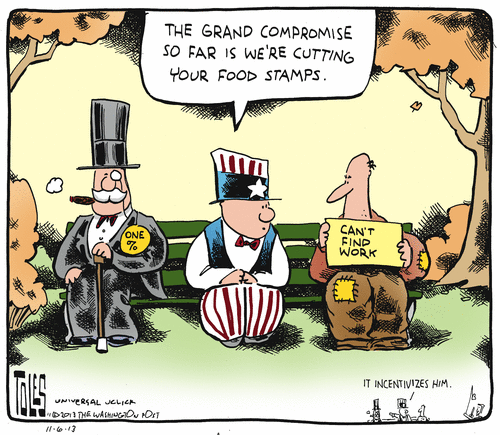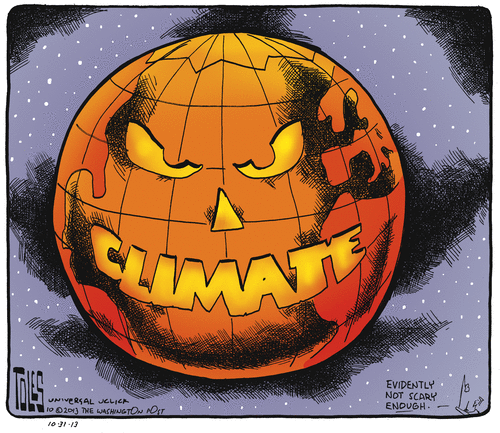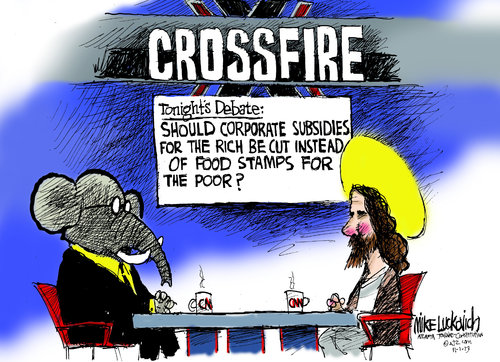Disrespect, Race and Obama
By Charles M. Blow
In an interview with the BBC this week, Oprah Winfrey said of President Obama: “There is a level of disrespect for the office that occurs. And that occurs, in some cases, and maybe even many cases, because he’s African-American.”
With that remark, Winfrey touched on an issue that many Americans have wrestled with: To what extent does this president’s race animate those loyal to him and those opposed? Is race a primary motivator or a subordinate, more elusive one, tainting motivations but not driving them?
To wit, Rush Limbaugh responded to Winfrey’s comments in his usual acerbic way, lacking all nuance:
“If black people in this country are so mistreated and so disrespected, how in the name of Sam Hill did you happen? Would somebody explain that to me? If there’s a level of disrespect simply because he’s black, then how, Oprah, have you managed to become the — at one time — most popular and certainly wealthiest television personality? How does that happen?”
No one has ever accused Limbaugh of being a complex thinker, but the intellectual deficiency required to achieve that level of arrogance and ignorance is staggering.
Anyone with even a child’s grasp of race understands that for many minorities success isn’t synonymous with the absence of obstacles, but often requires the overcoming of obstacles. Furthermore, being willing to be entertained by someone isn’t the same as being willing to be led by them.
And finally, affinity and racial animosity can dwell together in the same soul. You can like and even admire a person of another race while simultaneously disparaging the race as a whole. One can even be attracted to persons of different races and still harbor racial animus toward their group. Generations of sexual predation and miscegenation during and after slavery in this country have taught us that.
Alas, simpletons have simple understandings of complex concepts.
But it is reactions like Limbaugh’s that lead many of the president’s supporters to believe that racial sensitivity is in retreat and racial hostility is on the rise.
To be sure, the Internet is rife with examples of derogatory, overtly racial comments and imagery referring to the president and his family. But the question remains: Are we seeing an increase in racial hostility or simply an elevation — or uncovering — of it? And are those racist attitudes isolated or do they represent a serious problem?
Much of the discussion about the president, his opposition and his race has centered on the Tea Party, fairly or not.
In one take on race and the Tea Party that went horribly wrong this week, Washington Post opinion writer Richard Cohen wrote:
“Today’s G.O.P. is not racist, as Harry Belafonte alleged about the Tea Party, but it is deeply troubled — about the expansion of government, about immigration, about secularism, about the mainstreaming of what used to be the avant-garde. People with conventional views must repress a gag reflex when considering the mayor-elect of New York — a white man married to a black woman and with two biracial children. (Should I mention that Bill de Blasio’s wife, Chirlane McCray, used to be a lesbian?) This family represents the cultural changes that have enveloped parts — but not all — of America. To cultural conservatives, this doesn’t look like their country at all.”
What exactly are “conventional views” in this context? They appear to refer specifically to opinions about the color of people’s skin.
Cohen seemed to want to recast racial intolerance — and sexual identity discomfort — in a more humane light: as an extension of traditional values rather than as an artifact of traditional bigotry. In addition, Cohen’s attempt to absolve the entirety of the Tea Party without proof fails in the same way that blanket condemnations do. Overreach is always the enemy.
I don’t know what role, if any, race plays in the feelings of Tea Party supporters. It is impossible to know the heart of another person (unless they unambiguously reveal themselves), let alone the hearts of millions.
But nerves are raw, antennas are up and race has become a lightning rod in the Obama era. This is not Obama’s doing, but the simple result of his being.
15.5% are poor in N.J.
NJSpotlight, Nov. 8, 2013
The U.S. Census Bureau typically judges poverty based on income and household size, using the same thresholds across the country. For the third year in a row, it has released what it is calling “supplemental poverty measures,” which take into account government benefits that are available in a specific geographic area, as well as the cost of living.
Doing so changes New Jersey’s official poverty rate of 10.7 percent to 15.5 percent. The national poverty rate is 15.1 (without supplemental measures) to 16.1 percent (with supplemental measures).
The supplemental measures reflect both a decrease in the poverty rate — due to available government subsidies such as the national school lunch program, unemployment insurance, housing subsidies, social security, and other government programs — as well as the local cost of living. It seems New Jersey’s high cost of living outweighs any governmental benefits.
That’s not the case for all states: 28 states actually improved their poverty rates due to government and other programs. These include some very poor states, such as Alabama, Georgia, Kentucky, and Louisiana, as well as relatively wealthy states like Minnesota, Pennsylvania, and Vermont.
Slashing the food stamps program
N.Y. Times, Nov. 1, 2013
By Dorothy J. Samuels
Even as negotiations proceed in Congress over a new farm bill likely to contain a large cut in food stamps, needy Americans who rely on the program are confronting an immediate drop in benefits.
As of today, the boost to the federal food stamps program included in the 2009 Economic Recovery Act expires, abruptly slashing benefit levels that were already inadequate for millions of poor children and their families, as well as impoverished disabled and elderly people, who will now find it significantly harder to afford adequate food.
The callous Republican obsession with eviscerating the program is only partly to blame. Today’s cut is the product of a shabby deal Democrats made in December 2010, which accelerated the sunset of the benefit increase contained in the economic stimulus plan. Essentially, Congressional Democrats, cajoled by the Obama White House, gambled that they could restore the lost money before the cut became effective — a convenient but unrealistic bet given that Republicans were about to take control of the House.
Anti-hunger advocates expressed concern at the time about the bargain and its potential to seriously hurt food-stamp recipients not too far down the road — a worry, unfortunately, that has now become reality.
As a result of today’s cut, a household of three will lose, on average, $29 a month in food stamp benefits. That might not sound like much. But consider that just two months ago, the Agriculture Department reported that 17.6 million households lacked sufficient resources at some point during 2012 to put food on the table. The Census reported that 15 percent of Americans live in poverty.
A newly-released study by the Food Bank for New York City found that even before the Nov. 1 cut, three-quarters of the food-stamp recipients using city pantries and soup kitchens reported that their benefits lasted only through the first three weeks of the month.
And a survey last year by the New York City Coalition Against Hunger found that 63 percent of local food charities were unable to come up with sufficient food to meet demand and were forced to ration food with steps like reducing portion size, closing doors early or turning people away — a situation replicated all across the country and bound to worsen given shrunken monthly benefit allotments.
Far from minor, today’s food stamp cut means more misery for the most vulnerable in New York City and beyond. Just in time for the holiday season.
Climate
Crossfire
Sandy Related Resources
NJSpotlight, Oct. 29, 2013
A comprehensive collection, ranging from state regulations, maps, and damage assessments to insurance forms, grant applications, and post-Sandy policy statements
NJ PRIOR TO SANDY
NJ Shore Protection Master Plan (1981)
Coastal Area Facility Review Act (CAFRA) — governs coastal construction
Baseline Demographic and Economic Conditions Prior to the Storm
Historical Sea-Level Rise in NJ
Historical U.S. Hurricane Damage Statistics
DAMAGE CAUSED BY SANDY
MAPS
Sandy Impact Analysis Map (zoom in and click on county for detailed information)
Areas Where Flooding Occurred Vs. Places Where Flooding Was Predicted
Number of Damaged Homes, Town by Town
Average Damage Assessment, Town by Town
OTHER RESOURCES
Hurricane Sandy Timeline
Audit of FEMA’s Initial Response to Sandy to NJ
Rutgers Report: The Economic and Fiscal Impacts of Hurricane Sandy in New Jersey
Rutgers Report: Low-Income Households Impacted by Superstorm Sandy
Extreme Weather, Extreme Costs: The True Financial Impact of Hurricane Sandy on New Jersey Homeowners, Businesses and Municipalities
Hurricane Sandy’s Untold Filthy Legacy: Sewage
Assessment of Sandy’s Damage to the Recreational Marine Business in NJ
The Effects of Hurricane Sandy on the Homeless in NJ
Impacts of Sandy on Beach Nesting and Migratory Shorebirds in NJ
Impact of Sandy on Petroleum Supplies
STORM RECOVERY
MAPS
Sandy-Related Insurance Claims, by Town
Sandy Recovery Loans, by Town
NJ Firms with Contracts for Sandy-Related Work
OTHER RESOURCES
Distribution of Sandy Aid money, by Federal Department and Agency, Post-Sequester Cuts (not including additional $9.7 billion to replenish National Flood Insurance Program)
Track Sandy Funds Received by Each Municipality
Information on CDBG Grant Programs Available to Homeowner, Homebuyers and Renters
Information on All CDBG Grants Administered by the NJ DCA (including those for landlords, businesses and local governments
Breakdown of CDBG Money Pledged for NJ (ignore estimated labor total)
FEMA Assistance Analysis: Who in NJ and NY Applied for FEMA Aid
Amount of FEMA Individual and Public Assistance Handed Out in NJ So Far (updated daily)
Rutgers Study Showing NJ vs. NY Disparity in Percentage of Applicants Approved for FEMA Individual and Household Assistance Grants
Chart of State Sandy Contracts Awarded
Sandy Recovery Scorecard: Track the Rebuilding Efforts in Each New Jersey Town
Information on NJ Building Codes and How to Rebuild Safer and Stronger to Prevent Future Damage
Report on Potential Legal Issues Arising from Sandy Recovery
PSEG Nuclear Preparations, Impacts and Lessons Learned
Sandy Long-Term Relief and Recovery Assistance Guide
FLOOD MAPS AND INSURANCE
How the National Flood Insurance Program works
Insurance Information Institute’s Guide to Flood Insurance
Look Up Flood Hazard Data and FEMA Elevation Requirements by Address
FEMA Flood Maps Released Sandy Vs. Latest Revisions
Estimate of Future Insurance Costs for Homeowners Who Elevate Their Properties
Number of Subsidized Flood Insurance Policyholders, By County, Whose Rates Will Be Going Up
Map Showing Where the Most National Flood Insurance Program Policies are in Effect
Study by Union of Concerned Scientists on Reforms Needed in the National Flood Insurance Program
NJ Flood Mapper: Interactive Tool to Visualize Future Coastal Flooding and Sea Level Rise
Insurance Information Institute Data on Insured Losses from Sandy
New Jersey Hurricane Insurance Facts and Statistics
POST-SANDY POLICY DOCUMENTS
President Obama’s Sandy Supplemental Funding Request
NJ’s Disaster Recovery Action Plan (created to receive CDBG Sandy aid)
NJDEP Flood Hazard Control Act Amendments (passed to officially adopt new FEMA flood maps)
Fact Sheet on Flood Hazard Control Act Amendments
Federal Hurricane Sandy Rebuilding Task Force Report (issued August 2013)
Summary of 9 key findings from the Sandy Rebuilding Task Force
PREDICTING THE FUTURE
MAPS
NJ Flood Mapper: Interactive Tool to Visualize Future Coastal Flooding and Sea Level Rise
NOAA Sea Level Rise Mapping Tool
Assessing the Costs of Climate Change in New Jersey
NOAA Flood Exposure Coastal County Snapshots
NJDEP Report of Rising Cost and Difficulty of Beach Replenishment
NJ Community Planning Tool to Plan for Climate Change
Insurance Information Institute’s Primer on Climate Change-Related Insurance Issues
Association of State Flood Plain Managers: Hurricane Sandy Recovery – Using Mitigation to Build Safer and More Sustainable Communities
Growing Urban Ag Through Policy
GlobalPossibilities, Oct. 29, 2013
By Robert Ogilvie
Vice President for Strategic Engagement, ChangeLab Solutions
All across the country, the urban agriculture movement is growing. Communities are raising fruits and vegetables in places as varied as vacant lots, backyards and such public properties as vacant fields, schoolyards, parks, utility rights-of-way and even the rooftops of public buildings. These communities can see many benefits: new sources of fresh and healthy food, food literacy, job skills development, urban greening, promotion of civic participation, public safety and urban revitalization.

In many cases, urban gardening begins organically, but without a supportive policy structure in place, it can be difficult for these programs to take root, thrive and be of maximum and equitable benefit to the whole community. These policy structures might consist of changes to existing zoning code, or they could consist of partnership agreements that help spread the responsibility for a successful urban gardening program across complementary groups.
Here are two examples of communities that have successfully built such policy structures:
- Cleveland has turned an overwhelming number of vacant and foreclosed properties — nearly 20,000 in total, with 5,000 in the City of Cleveland Land Bank — into an opportunity. The Reimagining Cleveland Initiative, a partnership of Neighborhood Progress, Inc. (NPI) the City of Cleveland, Kent State University, Ohio State University Extension, and others are implementing a pilot land reuse demonstration initiative that is turning city-owned vacant sites into productive use – including such urban agriculture uses as community gardens, marker gardens, orchards, vineyards, pocket parks and neighborhood pathways.
Cleveland Community Gardens. Access this map here.
To make this a reality, the city updated their zoning code in November 2010 to permit urban agriculture in residential districts, which had been banned under the previous zoning code. Also, the Ohio Department of Agriculture came out with guidance on which home-grown and homemade products can and cannot be sold, and how products for sale need to be processed, packaged and labeled.
- San Jose, CA had more demand for garden space than the city could accommodate through the 30-year-old San Jose Community Garden Program, and budget cuts had forced the city to place a 2009 moratorium on creating any new gardens. In response, a local nonprofit formed a new partnership with the city to try and meet community demand. Partners in San Jose’s new Community Garden program include the Department of Parks, Recreation and Neighborhood Services (PRNS), which has long administered the program; The Health Trust, a local nonprofit that had been coordinating healthy food access work through the Campaign for Healthy Food San Jose; and CommUniverCity, another local nonprofit focused on service-learning programs for local youth. CommUniverCity subleases land from PRNS and is responsible for garden maintenance and operations, must carry a $1 million in liability insurance and must indemnify the city. PRNS, in turn, manages the lease and ensure a steady water supply from the Santa Clara County Water District. The Health Trust funds CommUniverCity’s operations.
In Cleveland, San Jose, and other communities in which urban and community gardening has taken root, partnerships have been key to helping those projects achieve their full community transformation potential. Successful partnerships are built on agreements that define the relationship between individuals, community organizations, and public entities, and provide clarity to everyone involved.
These agreements can take many forms — they can be informal agreements, leases, licenses, contract, memoranda of understanding (MOUs), permits or joint use agreements. Different types of agreements are right for different communities, but most should address the following issues:
- Liability: Indemnification and insurance;
- Utilities;
- Maintenance;
- Growing practices & pest management;
- Soil conditions;
- Access and security; and
- Improvements.
With these issues covered, your community will be better prepared to reap and sustain the full benefits of urban gardening and greening.ChangeLab Solutions is here to help think through what agreements would best seed the ground for a rich harvest for every member of your community.
========
ChangeLab Solutions offers an array of tools to help make community gardening a reality, including Dig, Eat, and Be Healthy: A Guide to Growing Food on Public Property, and Seeding the City: Land Use Policies to Promote Urban Agriculture.
This work was originally published on CommunityCommons.org.
Behind the Roar of Political Debates, Whispers of Race Persist
N.Y. Times, Oct. 31, 2013
By John Harwood
WASHINGTON — President Obama last week sought to turn attention from health care to immigration — in other words, from one racially divisive issue to another.
Whites tend to hold negative views of Obamacare, while blacks tend to like it. Specifically, 55 percent of whites, an NBC News/Wall Street Journal poll found this year, consider Mr. Obama’s health care law a bad idea, while 59 percent of blacks call it a good idea. On immigration, 51 percent of whites oppose legal status for illegal residents, but 63 percent of blacks and 76 percent of Hispanics favor it.
Those attitudes, and the continued growth of the nonwhite population, have produced this sometimes-overlooked result: American politics has grown increasingly polarized by race, as well as by party and ideology.
That reality promises to command more attention as the day draws closer when whites will no longer make up a majority of the population, which the Census Bureau projects will be in 2043.
Race receded from public dialogue in the mid-1990s for reasons that served both parties. Republicans grew fearful of criticism of the racially charged tactics that began with Richard M. Nixon’s “Southern strategy.” And a Democratic president — Bill Clinton — and a Republican Congress overhauled welfare, draining racial electricity from partisan combat. By 2008, Mr. Obama sought to dial back talk of race in his campaign to become America’s first black president.
Now two factors have combined to raise the racial volume. First, the growing voting strength and allegiance of black, Hispanic and Asian-Americans have made nonwhites an increasing share of the Democratic coalition. Second, conservative whites are bitterly resisting both Mr. Obama and his agenda.
Thus a crucial variable before last November’s election was the racial composition of the electorate. As the Obama team predicted, the proportion of white voters fell to 72 percent. The president won by drawing eight in 10 black, Hispanic and Asian-American votes, even as Mitt Romney won six in 10 white votes.
Electoral geography punctuated those disparities with historical resonance. In the 11 states of the Confederacy, Mr. Romney outpolled Mr. Obama by nine percentage points. Elsewhere, Mr. Obama won by 10 points.
Against that backdrop, Congressional Republicans have pursued cuts in food stamp spending, and Republican-controlled state legislatures have enacted voter-identification laws. A Republican official in North Carolina recently resigned after telling a “Daily Show” interviewer that ID cards could diminish voting by “a bunch of lazy blacks that wants the government to give them everything.”
Senator Rand Paul, Republican of Kentucky, wrote his 2011 book, “The Tea Party Goes to Washington,” with a former radio host known as the Southern Avenger who wore a mask decorated with the Confederate flag. This summer, the co-author left his job as the senator’s social media director after news reports emerged about that earlier work.
Stanley Greenberg, a pollster for Mr. Clinton and other Democrats, said that recent focus groups among core Republican voters highlighted anxiety that “big government is meant to create rights and dependency and electoral support from mostly minorities who will reward the Democratic Party with their votes.”
“While few explicitly talk about Obama in racial terms, the base supporters are very conscious of being white in a country with growing minorities,” Mr. Greenberg wrote. “The base thinks they are losing politically and losing control of the country.”
One risk for Democrats is reacting to those cultural fears with stridency, as Representative Alan Grayson of Florida did recently in likening the Tea Party to the Ku Klux Klan, drawing a rebuke from the Democratic Party’s national chairwoman.
Some Republicans strike similar chords. In Kentucky, an ally of Senator Mitch McConnell, the Republican leader, hit Mr. McConnell’s Tea Party-backed primary challenger for having once supported a third-party presidential candidate “found on YouTube giving a lengthy speech in front of the third national flag of the Confederate States of America.”
Fred Steeper, a Republican pollster who advised both Presidents Bush, worries about renewed attention to racial divisions for two reasons.
One is that it could taint what he calls the Republican Party’s “legitimate argument” in favor of self-reliance and smaller government. The other is the difficulty of winning national elections if the party’s hard-line on immigration continues to alienate Hispanics. “Racism may be a part of it,” especially among working-class whites, Mr. Steeper said of the immigration stance. “The Republican Party needs to stop pandering to that.”
He added, “The Republican Party needs to throw in the towel on the immigration issue.”
The Democrats’ problem is winning over whites. At the moment that’s a challenge of governance — as Mr. Obama’s struggle to implement his health law demonstrates. “The challenge we have with the health care law is similar to the challenge we’ve had in our politics more broadly,” Mr. Obama said in a recent interview. “There have been caricatures of what we’re trying to do.”
Most uninsured Americans who will be helped by the law, he added, “are going to be white.”
The risk for the country is heightened racial tensions. Mr. Obama’s advisers play down that prospect for the long term, noting younger Americans’ instinct for tolerance. “As rising generations replace older ones,” a study by the liberal Center for American Progress concluded last week, “concerns about rising diversity will recede.”
In the meantime, Mr. Steeper hopes Republicans can persuade more Hispanics, Asian-Americans and blacks to align with their message of opportunity. “We should have two parties based on a different approach to the role of government,” he said. “I don’t want our parties to be representing racial groups.”
New report: Resilient against what?
New report just out:
Resilient against what?
How leading U.S. municipalities are understanding and acting on resilience






